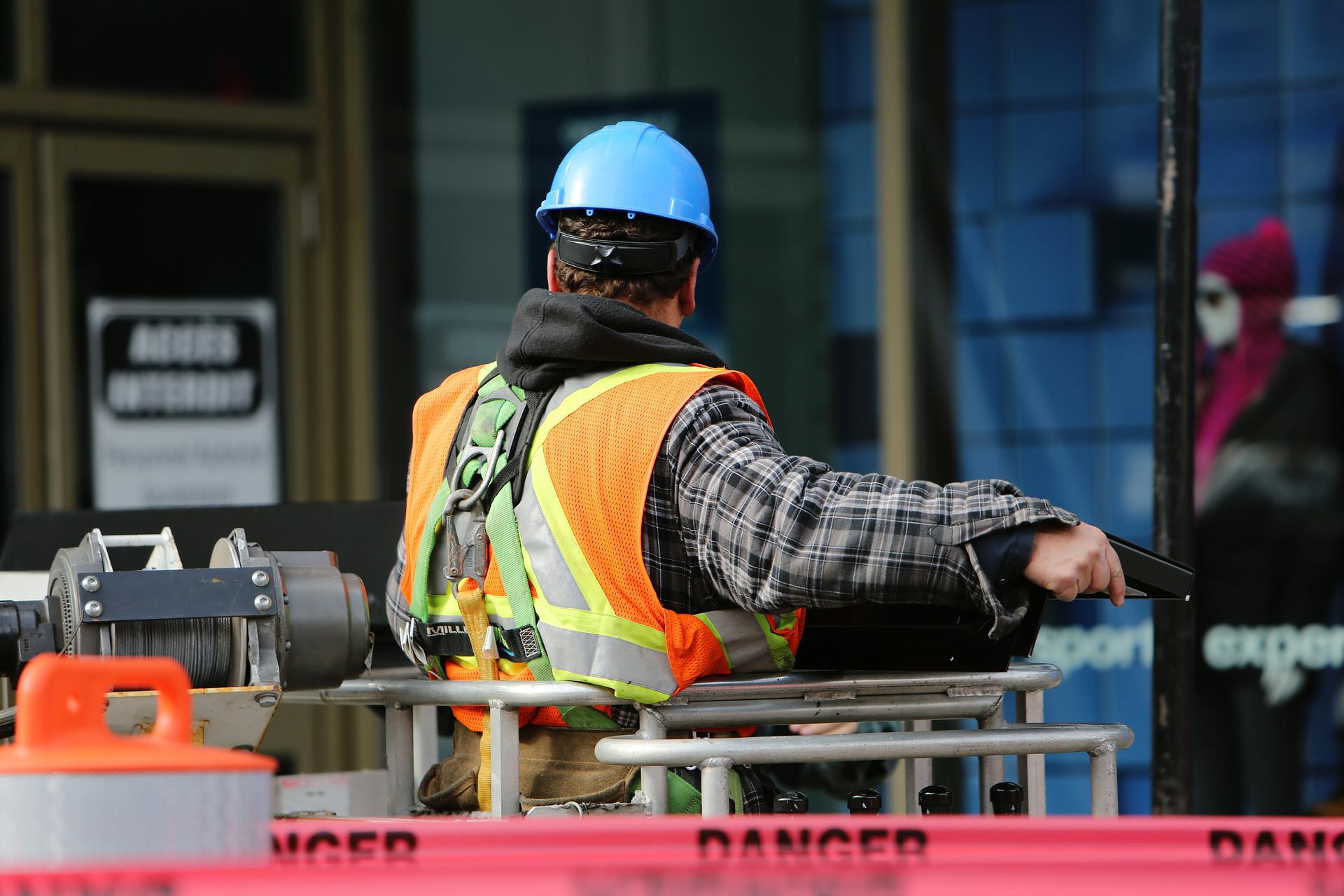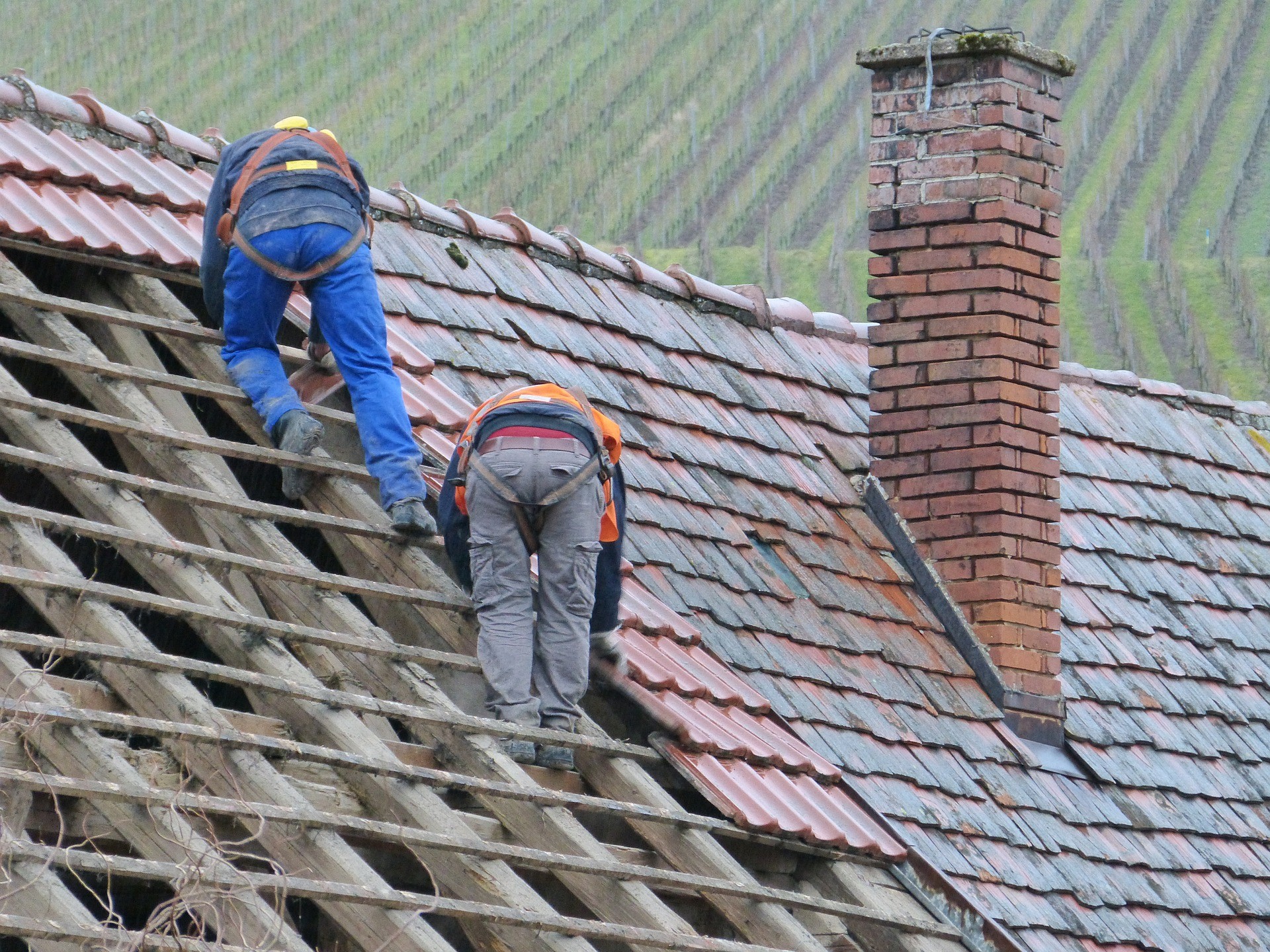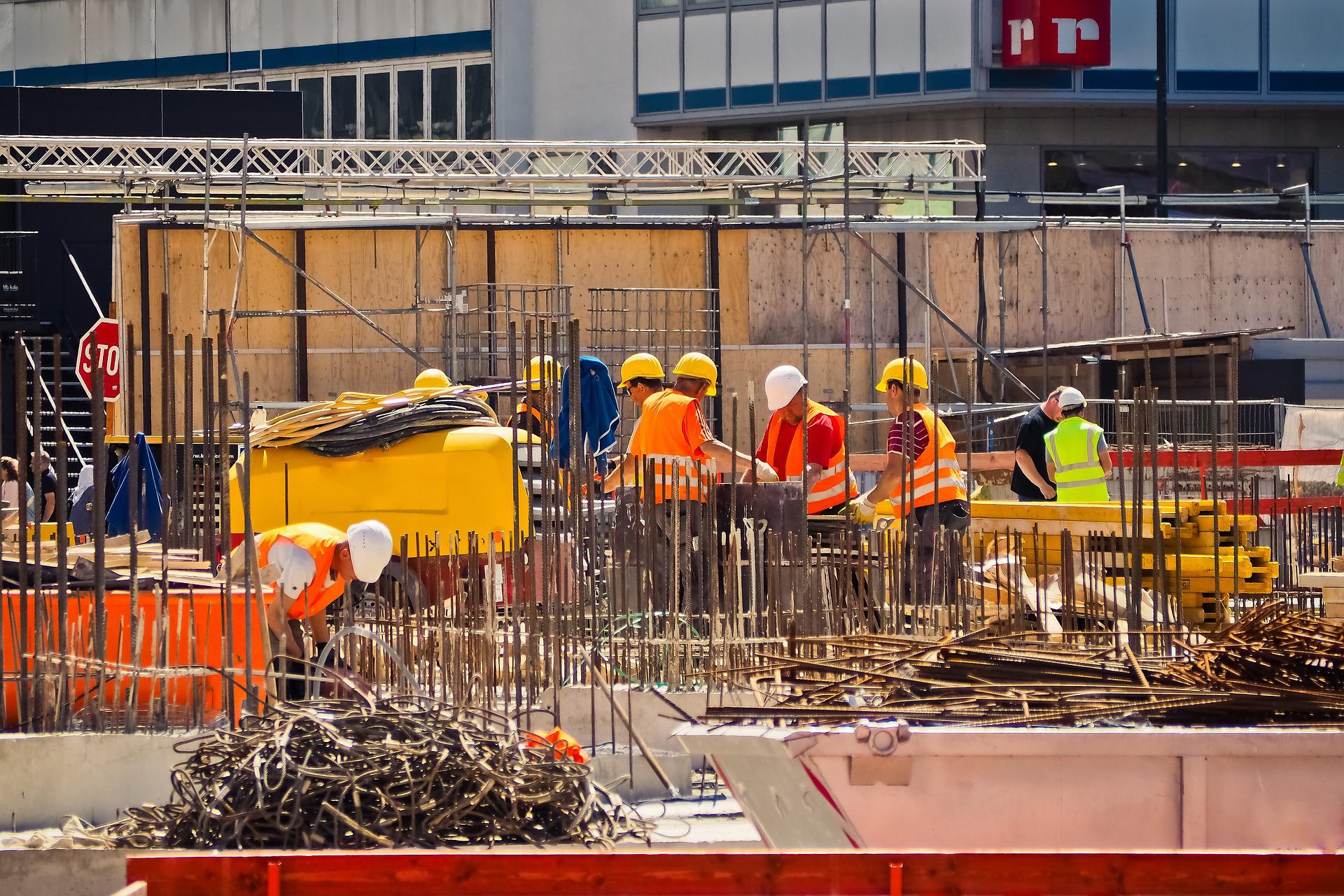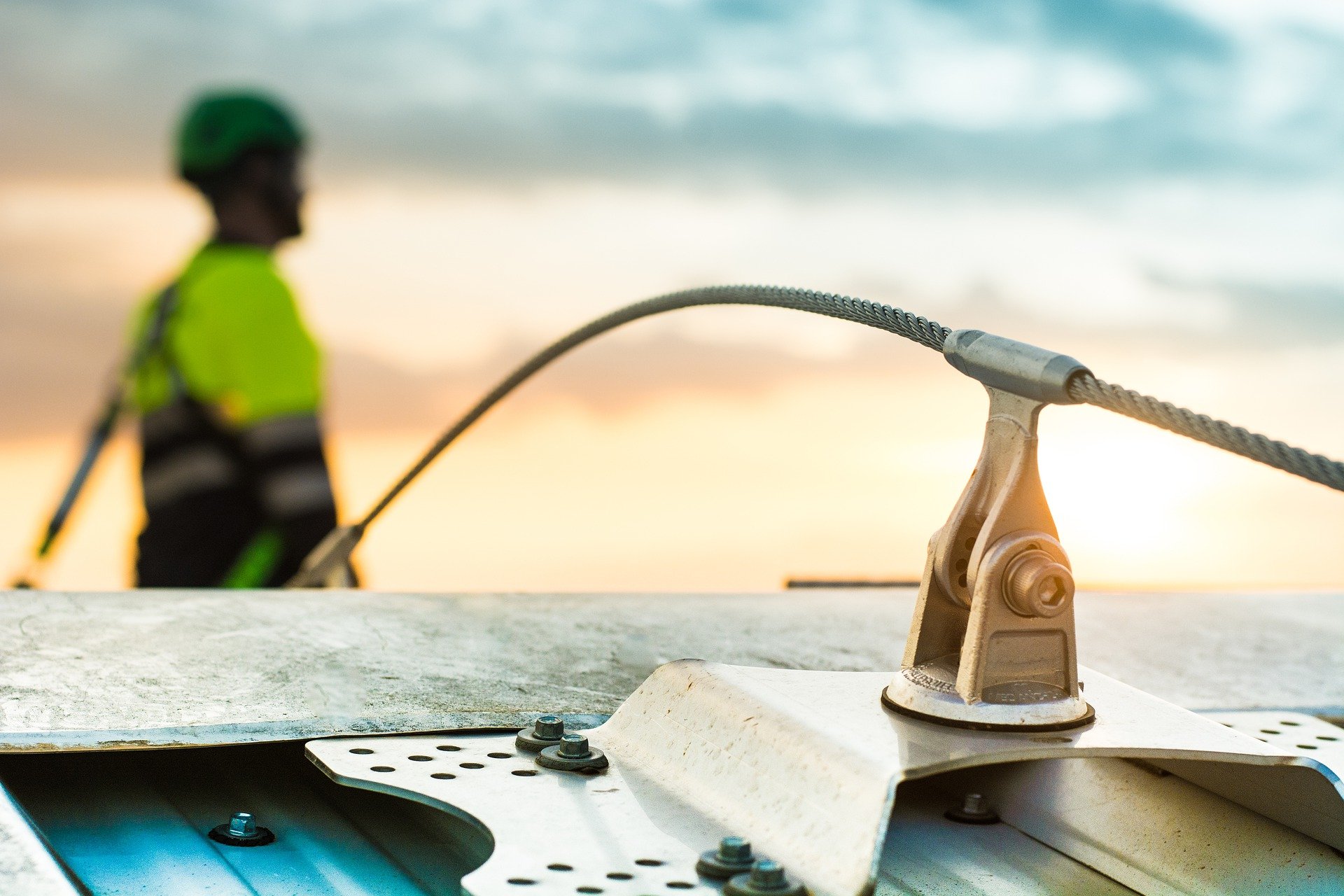How does a fall arrest system work? We look at why fall arrest systems are important to working at height safety and how they work.
How Does A Fall Arrest System Work?
Fall arrest systems are one of the final lines of defence for builders and workers who possess duties at heights, exposing themselves to dangerous fall hazards frequently. Other preventative active fall protection methods include implementing protective barriers and guardrails, fall-hazard warning signage, and several personal restraints to prevent falls.
Personal fall protection systems include body-holding devices and equipment, such as harnesses, connector equipment, lanyards, anchor lines and points to keep you hooked onto the structure, even if you fall. They also consist of safety nets attached to certain aspects of the building, spread out evenly, ready to catch any falling workers; finally, the last example of fall arrest equipment is fall arrest bags or mats.
The mats or bags are air-filled pockets in large cushioned structures piled and positioned close together beneath users to prevent a detrimental impact. One of the most significant elements and causes of occupational injury and death in the workplace is fall hazards within the construction industry. Due to the introduction of this information, each jurisdiction across the world has developed programs suited for occupational safety.
MAIN RISKS OF WORKING AT HEIGHT

It primarily catered towards all those working at height who aren't protected with the right apparatus, barrier and restraint devices. Plenty of jurisdictions request those working at height and those operating the equipment complete risk assessments to ensure the type and level of protection necessary to get the job done. Fall arrest systems reduce the impact or shock level your workers may experience should they fall from extreme heights.
However, whilst such equipment and devices work, they cannot guarantee that your fallen worker is entirely safe from certain kinds of harm. For example, builders or employees may suffer from a fatal condition due to the increased pressure on the heart or some form of suspension trauma. Such is why it is paramount to have a rescue plan in place to save any suspended workers that may be dangling from harnesses, bringing them to ground level and carefully placed in horizontal lifelines to prevent cardiac arrest.
What is the difference between fall arrest and fall restraint?
There are a few significant differences between fall arrest and restraint that you must be aware of when operating any working at height projects and jobs.
These are the main differences and similarities between the two:
Method of Protection - Fall Restraint:- Prevents individuals from reaching an unsafe fall hazard space using tie-off systems.
Method of Protection - Fall Arrest:- Stops a progressing fall with a tie-off system.
Necessary Equipment - Fall Restraint and Arrest:- Both require custom-fitted equipment.
Training Necessary - Fall Restraint and Arrest:- Both need ongoing and extensive training to utilise.
Is Inspection Needed - Fall Restraint and Arrest:- Both systems must be cared for and inspected before and after every use on construction sites.
Potential for Injury - Fall Restraint:- Mild-Risk
Potential for Injury - Fall Arrest:- High-Risk
Costs - Fall Restraint and Arrest:- Both include lower initial costs, yet there may be hidden costs regarding the maintenance of equipment, the setup time and the cost of training. No matter the pricing option, the safety of your employees and workers should be your biggest priority, so we recommend avoiding cheap equipment as it may not be as reliable.
EU Directive Preference - Fall Restraint:- Generally preferred over fall arrest equipment.
EU Directive Preference - Fall Arrest:- Generally used as a last resort when the work is too precarious.
Example Products - Fall Restraint:- Typically consists of a harness and lanyard at a set length at a weighted tie-off point to stay attached to the structure of the building.
Example Products - Fall Arrest:- Harnesses and retractable tied-off, fixed anchor points, safety nets, air-filled bags and mats.
What is FALL RESTRAINT?
One of the initial methods professionals encourage you to explore is fall restraint systems. The aim of such equipment and protective gear is to ensure those working at height cannot reach or access high-risk areas before they have the chance to fall.
Unlike fall arrest, restraint techniques are used to prevent falling altogether, and they work by supplying a high-quality lanyard attached to a body harness on an anchored point.
Such lanyards are always at a fixed length to hinder builders and workers from getting too close to high-risk places. For example, suppose operators are working on Mobile Elevating Work Platforms (MEWP).

In that case, they will utilise and wear restraint lanyards to ensure they don't lean too far out or slip out of the scissor lift or cherry picker basket. Such forms of protection are preferable methods as they are pretty risk-free.
Operators using these systems are less likely to fall and, therefore, won't experience immense force and shock whenever falls occur. However, please note that restraint equipment will not suit all jobs; some work requires more movement and more precarious situations, such as working on roofs or the edge of buildings. In such cases, it's paramount that you also use fall arrest systems alongside any personal protective gear.
When to use FALL RESTRAINT
There is somewhat of a hierarchy of controls, and restraint typically tends to be preferred compared to fall arrest. We recommend utilising fall restraint equipment and products wherever you can on your job or project or using it with fall arrest systems. Often there are restricted free-fall distances, such as those with low building heights, racking, vehicles or machinery surrounding the building.
These reduce the possibility of a safely arrested fall, meaning the only right choice is restraint systems. Unlike fall arrest, fall restraint doesn't require operators and on-site professionals to curate a rescue plan.

What is FALL ARREST?
Fall arrest systems should be your last resort and final control measure; before implementing them, you want to assess your construction structure and site carefully.
Look to see if there are any viable alternatives or fall restraint systems you can opt for. We recommend doing everything possible to prevent working at heights and only doing so when it's entirely necessary.
One of the most straightforward examples of the fall arrest system could be utilising a fall arrest lanyard attached with anchors to an anchor point with a body harness.
Anchors are used approximately 2 metres away from the roof or ledge edge to decrease the height and speed of the swing to avoid the pendulum effect. If you experience an error adding this equipment to your system, it could result in dangerous falls causing you to hit the ground.
The harness is the form of fall arrest, as they are designed to shorten the distance of a fall if operators ever lose balance. Unlike fall restraint, fall arrest equipment doesn't completely stop a fall, yet it will successfully lessen the impact and shock that your workers may experience. When selecting the perfect system for your construction site or building project, you want to account for the shape, size and strength of the structure it will be attached to or positioned by.
Consider the fall distance and the anchor point position. All fall restraint and fall arrest equipment must be installed and inspected by a competent person to keep your employees safe.
When to use FALL ARREST
For those working close by narrow ledges, on fragile surfaces or buildings with unusual roof shapes or structures, there is always a chance that you may fall, especially when using proper ropes or wearing lanyards on maintenance kits that could get caught.
At this point, you require PPE (Personal Protective Equipment) fall arrest equipment that will halt significant injury if you fall off or onto the lower levels of the building; it will stop you from hitting the concrete at intense forces.
To work at heights and apply fall arrest equipment or systems, you'll need additional training to follow the height regulations and safety guidelines. There must be a sufficient rescue plan in place so that, should you fall, trained on-site professionals or medics can retrieve you.
If you are working on a construction project in Suffolk, Cambridgeshire, Hertfordshire, Kent or London, you will be considring the safety requirements of your workers. Follow the links below for construction site safety nets, crash bags hire and edge protection hire.
Construction Safety Nets Suffolk Fall Arrest Bags Suffolk Edge Protection Systems Suffolk
